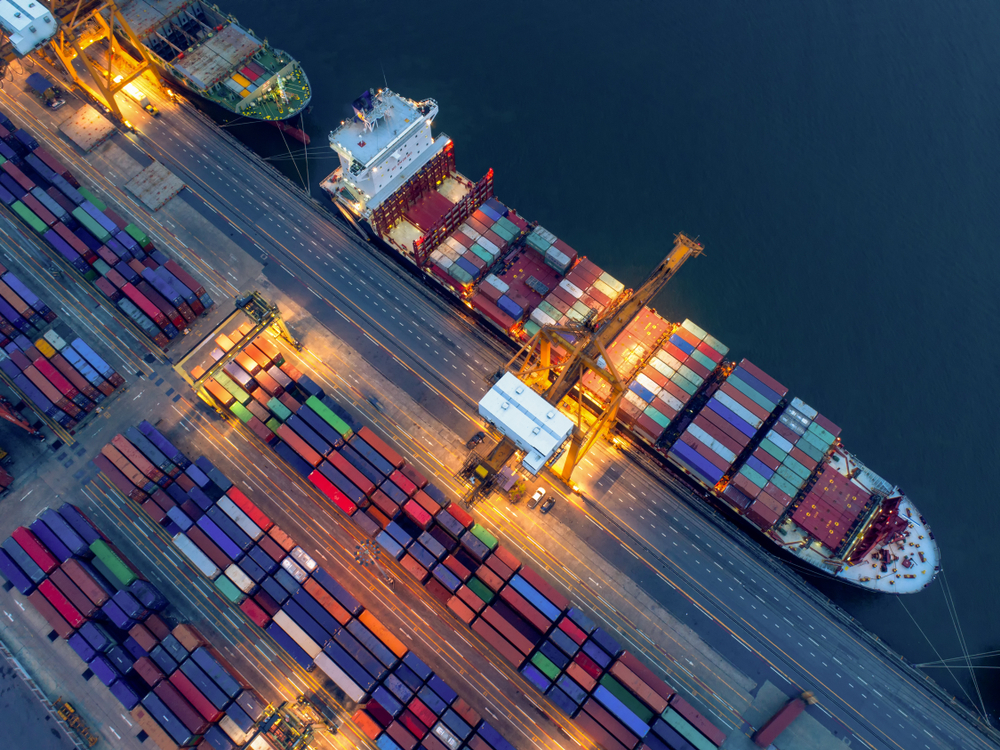September 29, 2021 - 4 minutes read

How Does Global Port Congestion 2023 Impact Your Supply Chain?
Some of the world’s biggest ports, particularly in the US West Coast and China, are in the middle of a congestion crisis, with hundreds of container vessels waiting to unload at global ports. . This backlog, caused in part by the ports’ inability to process all incoming vessels, is likely to stretch tot least the first half of 2023.
The issue didn’t happen overnight: this big supply chain disruption has been accumulating for months and is showing no signs of abetting. It’s likely to be worsened by this year’s peak shipping season, and the wave of holiday retail demand, which is already straining global supply chains.
Why is worldwide port congestion happening?
When the lockdown hit, consumer demands began to change dramatically. Due to the circumstances, people shifted their spending power from paying for services and experiences (that were temporarily unavailable) to purchasing online items and products, like clothing, home renovation, consumer goods, and so on. Almost two years into the pandemic, the demand for consumer goods is still growing exponentially, making it extremely complicated for carriers to manage this tsunami of containers at global ports. . With record amounts of imported commodities moving into the US, port congestion is magnified by container shortages and the inability of ports to increase their unloading pace to keep up with mega-ships and seasonal pushes.
The Suez Canal blockade, which took place in March, typifies the effect that a single vessel had has had on accelerating the disruption of global trade and port shipping activities. The magnitude of the congestion has resulted in substantial vessel delays in transit, which has lead to delays in unloading vessels, which has lead to delays in consumers receiving their goods., Another factor, which President Biden admitted last Spring, is that the US ports and railroads require new infrastructure and upgrades, and now with the peak shipping season in full swing, ocean transportation has become even more challenging.
In August alone, major U.S. ports were handled around 2.37 million imported containers, according to the Global Port Tracker report. For the year, the number of inbound containers is expected to be 25.9 million, reports the National Retail Federation. The figure is a record, with port activities exceeding volumes recorded in the last 20 years.
There are also other factors contributing to the challenge: a shortage of warehouse workers, truck driver shortage, and underdeveloped rail infrastructure. All these factors make the replenishment of goods even more problematic, as retailers ramp up for the rocky holiday season ahead.
How is port congestion affecting global supply chains?
Due to intense demand, container shipping rates are skyrocketing. Some shippers have seen more than a 600% increase in container rate costs over the past six months.. . On top of this, storage fees and port operation charges are growing too, hammering shipper profit margins across the globe. What’s more, it’s now just a 40% chance that the vessel will arrive on time, while in the past you might expect an 80% on-time performance.
For months, global shipping has struggled with managing capacity s due to fluctuations in consumer demand for products, as well as factory closures and pandemic containment efforts that have hindered port operations. As a result, there is an imbalance in container availability, if a booking can be found. The past year has seen changes in supply chain flows causing a deficiency of empty containers in regions where they are required. Moreover, some carriers are now skipping stops to avoid congestion, and further contributing to an unnatural imbalance of containers.
How to make your supply chain more resilient to the worldwide port congestion crisis?
On a final note, there is clearly a shipping slowdown all around the world that is deeply affecting global supply chains. The disruption will continue into 2023, as the holiday season ramps up demand. Increased freight rates, port charges, and months of long delays all result in decreased revenues for companies.
While businesses can’t control all the current processes on a global scale, it’s still possible to keep your supply chain resilient. The key to end-to-end supply chain visibility and agility is gathering more data from suppliers. This way, executives can adjust their inbound transportation strategy to be more flexible, when the possible delays are known or anticipated. A sophisticated supply chain visibility platform like Agistix integrates with any carrier system and serves as a central hub for all incoming data across every stage of the supply chain. With such technology solutions, heading into 2022 will see less friction and be more data-oriented.
